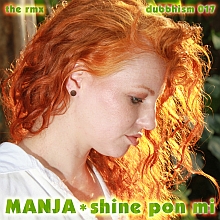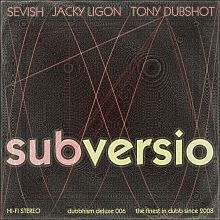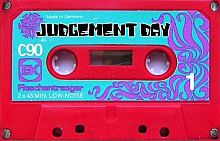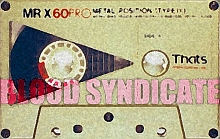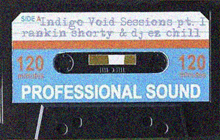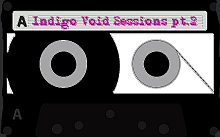This tutorial is for computer musicians who like to experiment with funny harmonies. If you don’t know anything about music theory that’s ok, but you should have a basic sense of harmony. Another thing you’ll need is a suitable synthesizer.
The FMTS VSTi is highly recommended but you can also use some of these instruments. Look for VSTi synths that can load .tun files like LinPlug synths, but avoid the free ZynAddSubFX VSTi (too buggy).
‘Xenharmonic’ means ‘strange harmony’. Something you’re not used to. That doesn’t mean xenharmonic music is less harmonic or off key. It’s just different and unusual.

HANERU by knowsur
OUCHI by knowsur
Tune up with these free tracks from Knowsur's album Nana Wodori.
Harmony basics: the octave
Just like you can’t have a tree without roots, you can’t really have musical harmony without the octave. The famous dub scientist Pythagoras is often credited with the ‘discovery’ of the octave.
 According to this story, Pythagoras discovered that if you play two strings, one twice as long as the other, the pitch produced by the short string is twice as high. That’s not all: he also noted that if you play the two strings at the same time, the sounds tend to fuse and they can even sound like one single tone.
According to this story, Pythagoras discovered that if you play two strings, one twice as long as the other, the pitch produced by the short string is twice as high. That’s not all: he also noted that if you play the two strings at the same time, the sounds tend to fuse and they can even sound like one single tone.Here’s how you play octaves on a midi keyboard: look at the pattern of the black and white keys and notice the ‘groups’ of twelve keys

If you play any note in this 12-key pattern and play ‘the same one’ in a pattern next to it you’re playing an octave. Now try this: play a note right next to the octave and you'll notice that the sound doesn’t fuse very well. You may also note that, depending on the type of sound you’re playing, this ‘refusal to fuse’ can be subtle or obvious.
HINT: if you don’t notice these differences you’re probably tone deaf. That’s ok, other people are colorblind. Why not try painting?
10 fingers, 12 keys?
Why is the octave divided in 12 equal steps? There’s a long, complex, technical explanation for that, so let's stick to the short answer: blame Pythagoras.
When Pythagoras discovered the octave, he was playing around with ancient string-instruments and flutes and he mused a lot about eternal cosmic harmony and how this relates to musical laws and octaves. Pythagoras did some calculations which produced a ‘scientific’ theory of musical/cosmic harmony. This theory paved the way for the design of musical instruments we still have today, like the piano, the guitar etc. All of these instruments divide the octave in a grid of 12 steps. Why 12? Put simply: because it sounds good.
But… (very important but) just because this 12-step grid sounds good that doesn’t mean it’s the only harmonic grid that sounds good. There’s even a group of instruments that sound like sh%t if you play them in a 12-step grid! But these instruments can actually sound good if you play them using other harmonic grids.
An example of instruments that ‘want to be played’ in a different harmonic grid would be metallic sounds like church bells. The gamelan, which has all kinds of bell-like metal instruments in various sizes and shapes is also tuned differently.
Getting xenharmonic with keyboards
If you check out Indonesian gamelan tunings you find that there’s a tendency to divide the octave in a grid of either 5 or 7 ~ more or less equal ~ steps. This means that compared to a western instrument, a gamelan is tuned in a completely different way.
An imaginary gamelan keyboard might look like this:

Note that 'between the dots' a whole octave is being covered! Think about it for a moment. If you understand this principle you can start to think about making music with it. To get a better idea of what happens if an octave is divided into 5 or 7 equal steps, look at the 'infographic' below.

What you should get from this graph is that the actual frequencies you work with are different. Look at an 'x' and notice that the harmonic grids/frequencies are almost the same in this region, but not exactly. That's the basic idea of xenharmonic music. You change the grid, or the tuning if you like. Why not try for yourself? Here’s how you change the harmonic grid of a synthesizer like the FMTS.
Using sounds that fit into the grid
A sine wave is a very simple sound. Why? Because it has no partials or overtones. Most other sounds do have overtones. The overtones of a sound are important for the character or timbre of a sound; the fundamental tone of a sound is more important for the pitch. Here's an interesting fact:
The overtones of a bell-like sound fit relatively well into a harmonic grid that divides the octave in 5 or 7 equal parts. Guitars, trumpets and piano's on the other hand fit relatively well into a harmonic grid that divides the octave in 12 equal parts.
tony dubshot - brrap brrrap by DUBBHISM
You want proof? Listen to this track and notice how the chords sound half piano/half bell. This tune was written in 7-tet (7 tone equal temperament, the octave divided in 7 equal parts) and all harmonic sounds, including the bass, were made using the FMTS VSTi synth. Why? because the FMTS makes it very easy to create patches that sound good in any specific harmonic grid - at least if you're comfortable with FM. (If not, try this FM Synthesis tutorial.)
The clip below shows the basics of xenharmonic composing with the FMTS synth in three simple steps. If you're ready to start playing around with tunings (in this case 7-tet) this is how you do it:
1. set the overall tuning to 7-tet
2. optimize the synthesis engine for 7-tet
3. create a patch that will (automagically) sound good in 7-tet
A great thing about the FMTS synth is that it allows you to store both the tuning and the sound in one patch, making it very easy to experryment with various tunings and timbres. If you want to create a track with multiple timbres you'll have to load them as separate FMTS channels in your sequencer host because the synth is not multi-timbral. But on the positive side the FMTS is free (and bugfree).
More xenharmonics
Xenharmonic music isn't just about dividing the octave in 7 equal parts, it's really about changing the harmonic grid in any way you want. Some musicians have come up with some pretty amazing tunings, but this stuff can also be very theoretical and 'challenging'. If you're new to harmonic experrymentation it's best to start with the simple stuff, like dividing the octave in a certain number of equal steps (which is great for easy transposing).
If you want to learn more there are plenty of resources, try Googling xenharmonic tuning. If you want to know more about the relations between tuning and timbre check out Bill Sethares' website. Finally here's some music by Jacky Ligon, who is also the designer of the FMTS synth. And don't forget to check out Split Notes, the netlabel run by the very talented Sevish and dedicated to xenharmonic music.
Jacky Ligon - Other Time by Xen-Arts





